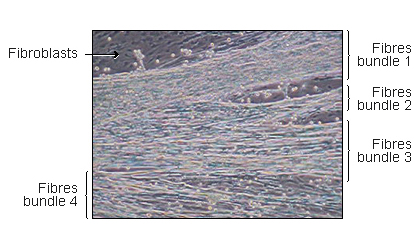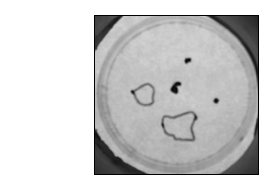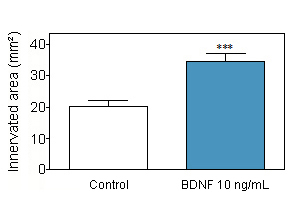Newsletter # 34

Cellular models
This model could be used to evaluate neurotrophic activity of compounds.
-
Muscle fibers
This picture represents 4 innervated muscle fibers bundles on muscle derived cells monolayer

-
Myoblastes and Fibroblasts
Muscle derived cells, mainly myoblastes and fibroblasts are cultured in monolayers. Immediately after myoblaste fusion, whole transverse slices rat embryos spinal cords with dorsal root ganglia attached are placed on the muscle monolayer. After 24h neuritis are observed growing out of the spinal cord explants. They make contacts with myotubes and induce the first contractions. Quickly thereafter, innervated muscle fibres located in proximity to the spinal cord explants, are virtually continuously contracting (see movies on our website). Innervated fibres are morphologically and spatially distinct from the non-innervated ones and could easily be distinguished from them
(Askanas et al., 1987) .
The ability of a molecule to promote spinal motor neuron survival, neurites outgrowth and/or neurons functionality can be evaluated by measuring neurite sprouting (number and length), innervation rate (number of spinal cord-muscle couple which lead to an innervation), innervation area (surface covered by innervated muscle fibers per spinal cord explant), ACh receptor aggregation as well as several other parameters depending upon the mode of action of the compound(Braun et al., 1996) .
-

Low magnification picture from a Petri dish in which 5 explants are initially placed. 3 weeks after, 3 explants, marked with a dot, were not able to produce an efficient innervation and the 2 latter explants innervated large muscle areas which were delimited by a line.
-

BDNF at 10 ng/ml increases the innervate rate from 20% under control condition to 25% with BDNF and augments the surface of skeletal muscle innervated by an efficient rat spinal cord-human muscle coupling.
-
We look forward to hearing from you.
Get in touch


 PREVIOUS
PREVIOUS